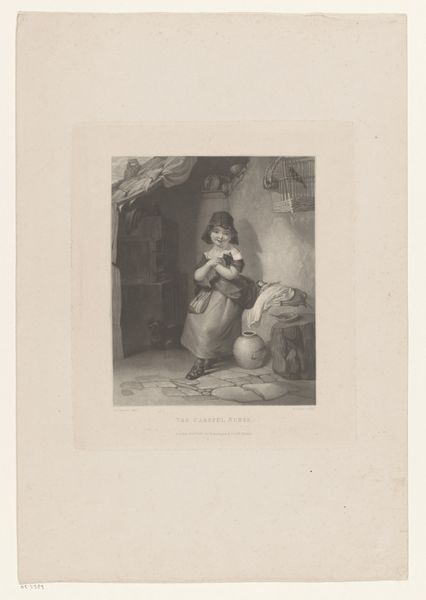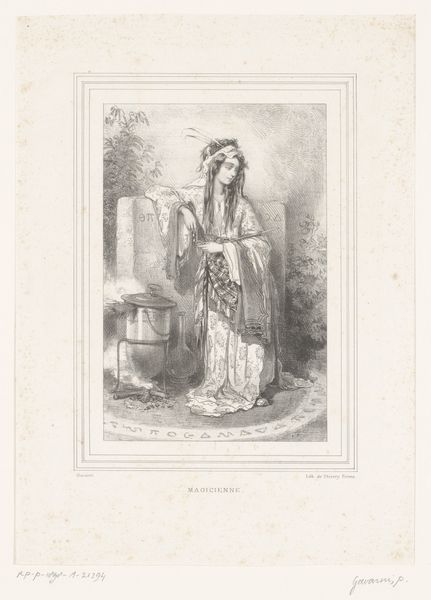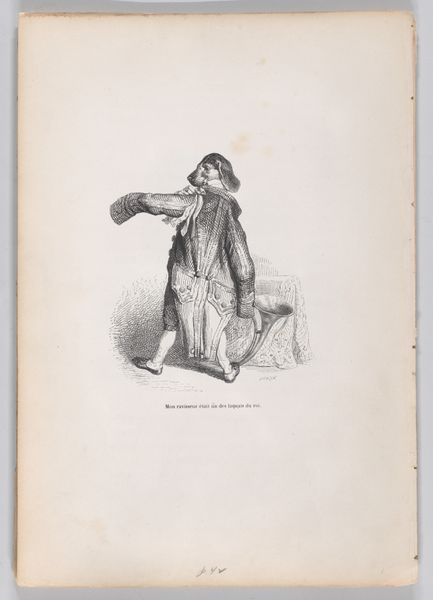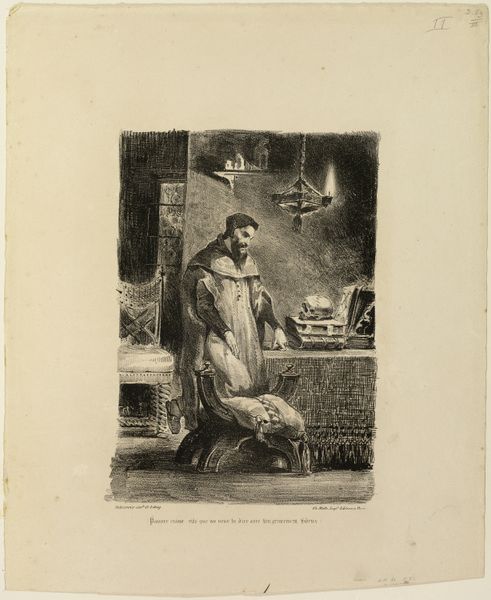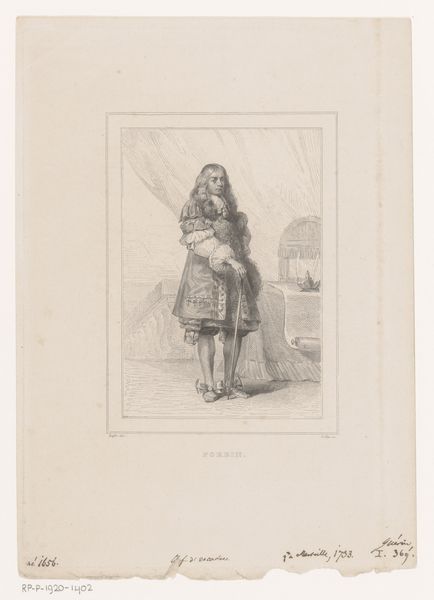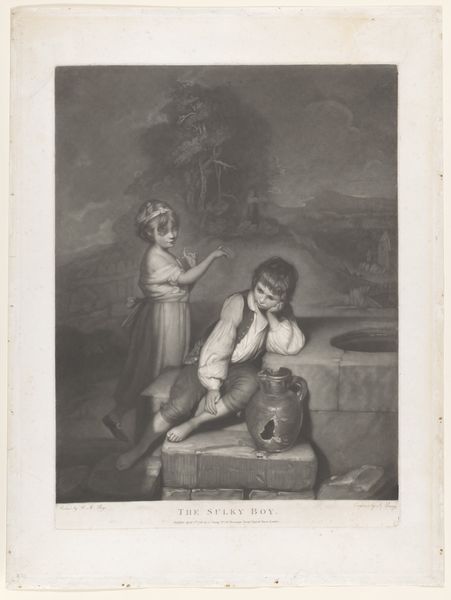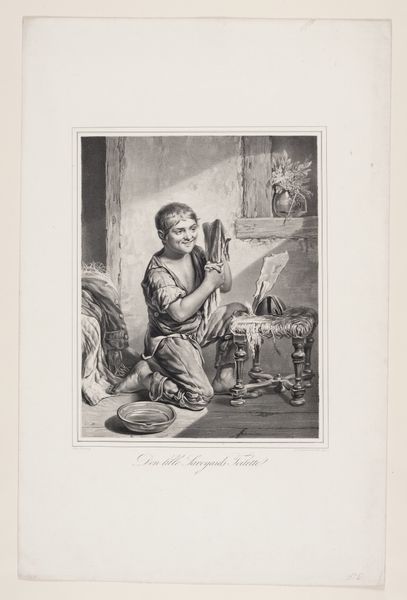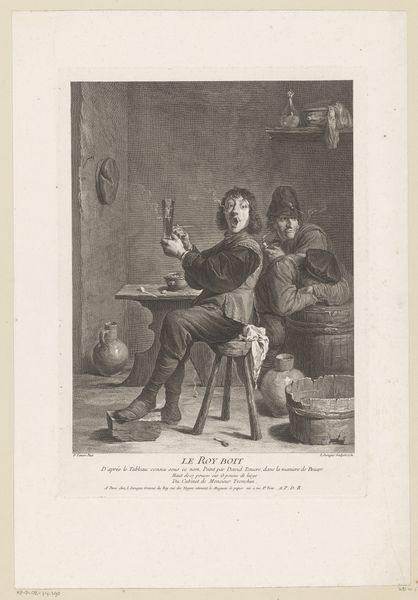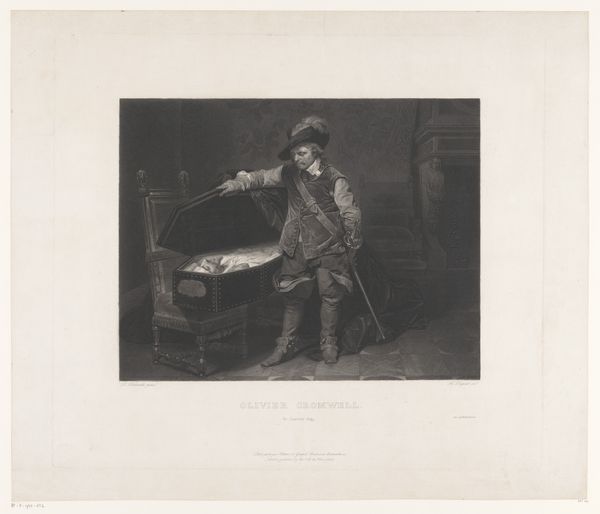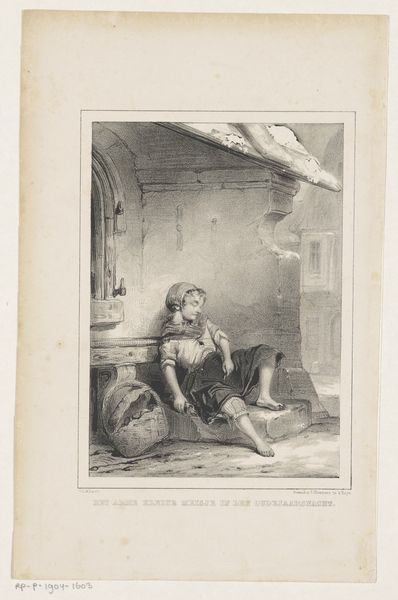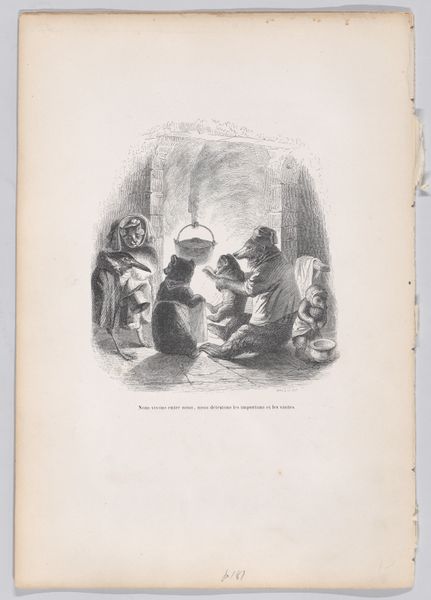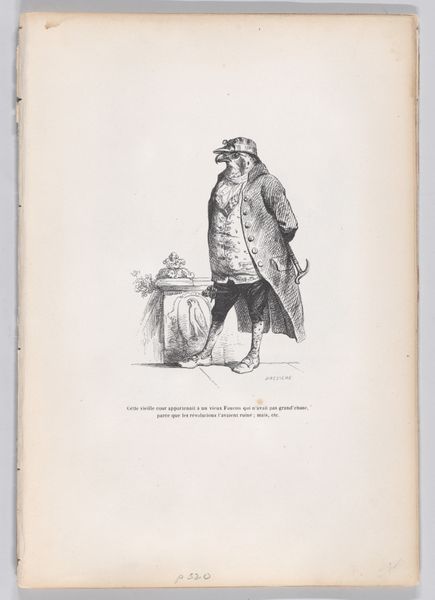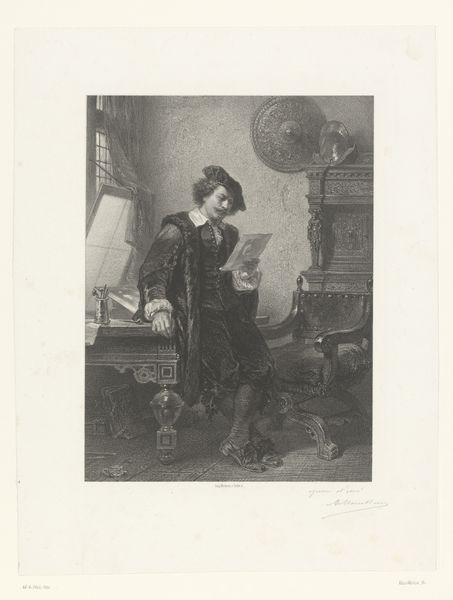
print, engraving
#
portrait
#
print photography
# print
#
dog
#
landscape
#
genre-painting
#
engraving
#
watercolor
#
realism
Dimensions: height 365 mm, width 275 mm
Copyright: Rijks Museum: Open Domain
Editor: This is "Bedelende jongen met hond" – Begging Boy with Dog – an engraving by Hendrik Wilhelmus Last, created sometime between 1827 and 1863. It’s currently housed here at the Rijksmuseum. The subject matter is quite direct; a young boy with a dog, seemingly down on their luck. I am immediately drawn to the contrast in textures; from the rough coat of the dog to the boy’s worn clothes, what compositional elements stand out to you? Curator: The image's structure is rooted in its tonal contrasts. Consider how the artist has employed light and shadow to sculpt form. The soft, diffused light across the subject and dog create a stark relationship with the more obscured setting. The relationship establishes a thematic balance between vulnerability and resignation in an unforgiving world. Can you describe the boy's pose in terms of structural principles? Editor: He’s kneeling, offering his upturned hat. One hand gestures towards the viewer, maybe an invitation or plea? His body almost mirrors that of the dog; creating a shared experience in suffering. What about the formal structure heightens this reading? Curator: Precisely. The echoing forms and subdued palette—achieved through engraving—flatten the image; further underscoring the relationship between human and animal and its subtle gradation from light to dark. These techniques force our eye across the horizontal expanse of the scene, emphasizing their shared experience rather than isolating them. Note how this contrasts with, say, more romanticized portrayals of childhood prevalent during this period. Did anything in this image stand out to you? Editor: Yes! The texture within the image feels… raw. Is that connected with Last’s choices on material? Curator: Without question. Engraving lends itself to fine detail but also a certain austerity. The strategic hatching creates shadow without resorting to dramatic color. The artist's control is evident in the modulation of these lines to achieve form and depth. Considering these elements, what overarching themes do you observe in this print? Editor: So, looking closely at the lines, shadows, and even how the boy is positioned within this sort of gloomy landscape, you start to consider poverty, hardship, and resilience from Last’s work! This has certainly brought a different dimension to how I understand artistic choices. Curator: Agreed. Understanding the structure reveals so much more than simply a sentimental scene.
Comments
No comments
Be the first to comment and join the conversation on the ultimate creative platform.
